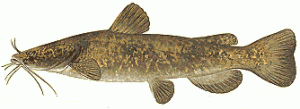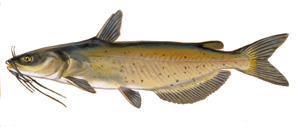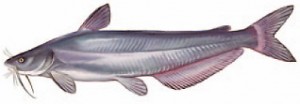For those of you who want to do some bass fishing this year here’s a list of five baits that’ll get you through most of the year. As you can see it isn’t necessary to spend a fortune. You can fish and catch on a budget.
- A Trick Worm – River bass are notorious for holding shallow. At times they move up in the creeks into less than a foot of water, sometimes into as little as 4 or 5 inches. A wacky rigged — just run the hook through the egg sack — will catch them all day long. Circle hooks are the choice of top anglers. They make a secure hookset and rarely snag on slime and debris. Just remember, you don’t jerk on them to set the hook. A slow, steady pull with you rod tip works best.
- A Small (1/4-ounce) Popper – Work it along slow at first. Just make a few rings in the water every time you move it back towards the rod tip. If that doesn’t provoke a strike try speeding it up.
- A Buzzbait – Throw this lure as far back into the shallows as possible and then bring it back with a steady cadence. There are clackers and there are squeakers. Most guys have a preference but the truth is that both styles have caught a lot of bass. Carry a couple of each.
- A Square-Bill Crankbait – Toss these fish-catchers up against the bank and bring them straight out, towards the boat. You can also flip and pitch them. Bright colors seem to work best — maybe because they can see them better in the stained water. Tip: Some of the best are made by Ima. That should come as no surprise. They were designed by Bassmaster Elite Series angler, Bill Lowen, from North Bend, Ohio.
- A Big Creature Bait – Pick anything you like. Texas rig it with a big hook, a fairly heavy sinker so you can punch through the debris and toss it on a heavy rod and reel with stout braided line. Work every target from every angle.

 Flatheads are by far the most exotic and perhaps the most popular species in the Ohio River. Flatheads can reach weights in excess of 100 pounds. Typical color ranges from brown to green with a white belly. They tend to develop lighter colors in clearer water and darker colors in darker waters.
Flatheads are by far the most exotic and perhaps the most popular species in the Ohio River. Flatheads can reach weights in excess of 100 pounds. Typical color ranges from brown to green with a white belly. They tend to develop lighter colors in clearer water and darker colors in darker waters. Channel cats are somewhat smaller than flatheads and are known to eat almost anything. They have more taste sensing organs than flatheads and blues, although blues aren’t very far behind. They feed almost entirely by smell and taste.
Channel cats are somewhat smaller than flatheads and are known to eat almost anything. They have more taste sensing organs than flatheads and blues, although blues aren’t very far behind. They feed almost entirely by smell and taste. Blue cats are the monsters of the river. Who can forget the old-time pictures of 100 pound plus blues being held up by local fisherman when the dams were being built? (Some writers claim they reached 200 pounds plus just before and during the Great Depression. That seems unlikely, but who knows for sure?)
Blue cats are the monsters of the river. Who can forget the old-time pictures of 100 pound plus blues being held up by local fisherman when the dams were being built? (Some writers claim they reached 200 pounds plus just before and during the Great Depression. That seems unlikely, but who knows for sure?)